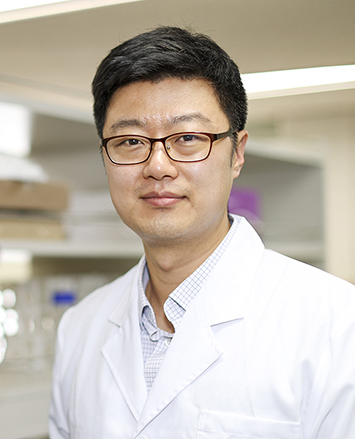Domestic Researchers Find ‘Biomarker’ for Diagnosing Lung Cancer in Advance! N
No.89308- Writer pr
- Date : 2021.01.13 12:55
- Views : 8656
Joint research by YU Department of Biotechnology Professor Jin Joon-oh and University of Ulsan Medical School
‘TRIM28 and RLIM protein’ lung cancer early diagnosis predicts 5-year survival rate... Clinical applications expected
Published in the latest issue of an international academic journal in cytobiology

YU Department of Biotechnology Professor Jin Joon-oh (41, photo on left) conducted joint research with the University of Ulsan Medical School Professor Lee Chang-hwan’s research team and discovered a biomarker protein that can diagnose lung cancer and predict the five-year survival rate.
In the case of lung cancer, there are no particular self-perceivable symptoms and there are few biomarkers for early diagnosis, thus having a self-diagnosis rate of just 20%. Though there are some materials presented as biomarkers for diagnosing lung cancer, there are difficulties in early diagnosis because there is a deficiency in particularities and sensitivity. When discovered early, the survival rate of lung cancer is high at 80%, and therefore, the research outcomes are receiving a great deal of attention from academia and medical circles.
The research team conducted research on finding proteins showing significant difference in concentration in lung cancer tissues and normal tissues from 104 lung cancer patients. In result, they found that there was a considerably high concentration of the protein called ‘TRIM28’ in lung cancer tissue. It was found that there was severe proliferation and movement of lung cancer in the cell model for which genes were manipulated to artificially create high amounts of TRIM28 proteins and in rat models.
Upon additionally checking the TRIM28 coupled proteins, the research team found the target protein RLIM decomposed by TRIM28. It was verified that RLIM decomposes MDM2 that breaks down p53, a well-known tumor-suppressing protein. In other words, it was found that TRIM28 adjusts RLIM and RLIM adjusts MDM2 to cause a chain decomposition reaction that adjusts p53 through cell and animal research.
The research team analyzed the correlation of TRIM28, RLIM proteins and the five-year survival rate using tissue samples from 101 lung cancer patients, and learned that the TRIM28 manifestation rate was high and that the five-year survival rate of patients with high RLIM manifestation was significantly lower.
The research team plans to proceed with clinical applications to use TRIM28 and RLIM as a biomarker for early diagnosis of lung cancer and for predicting the five-year survival rate, and also plans to conduct candidate material discovery research that can regulate TRIM28 and RLIM.
Meanwhile, this study was conducted with the support of the Ministry of Science and ICT, National Research Foundation middle-grade research project, and basic research project, etc., and the research outcomes were published in the latest issue (Dec 17) in cytobiology international academic journal <Cell Death and Differentiation>.